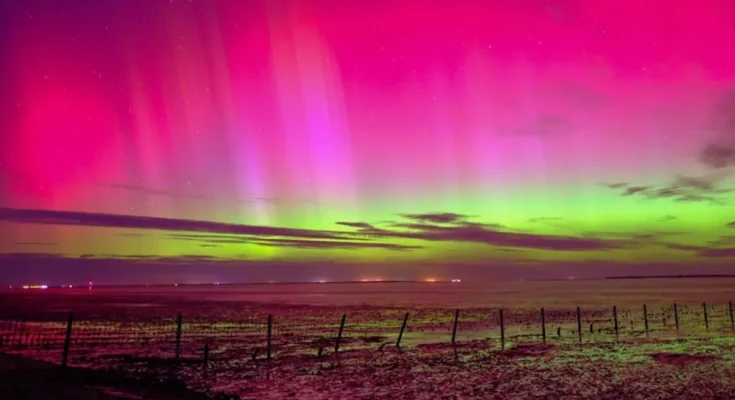A solar storm hits Germany
The northern lights over Hanover – and it’s not over yet
November 12, 2025 – 10:15Reading time: 2 minutes

A particularly powerful solar storm brought the northern lights to Lower Saxony. And there’s a good chance it will happen again.
A particularly strong solar storm brought northern lights to Lower Saxony on Wednesday evening. A colorful veil also appeared in the Hanover sky in the early hours – a sight only seen in the Nordic region.
According to the German Aerospace Center (DLR), high-energy particles from the sun hit the upper atmosphere at night and cause impressive light phenomena. Webcams and observations from the region show a reddish, pink and greenish glow that can be seen in Hanover and its environs between 4 and 5 a.m. – sometimes to the naked eye, but even more clearly in photos.
The trigger was a large solar storm called a coronal mass ejection (CME) which hit Earth. The “Discover” satellite recorded the particles a day earlier, as shown by the latest data from the space weather platform “Spaceweather.live”. The geomagnetic storm reached category G2 level – enough to make the aurora visible as far away as mid-latitudes.
As DLR reports, this is a phase of extremely high solar activity that peaks in the current eleven-year solar cycle. Such eruptions occur more frequently at this time.
Anyone who missed Hanover’s rare celestial phenomenon may have another chance. According to forecasts from Spaceweatherlive.com, the so-called Kp index – a measure of magnetic disturbances – will remain at high levels in the coming nights. This means that the sky can shine again today and tomorrow if the sky remains clear and the flow of particles hits the earth again.
For best visibility, we recommend looking north and looking for places with low light pollution – for example outside Hanover city limits or on the Steinhuder Meer. Even if the eye barely notices anything, a smartphone camera with night mode or a longer exposure time can often pick up weak colors and make them visible.
The northern lights occur when electrically charged particles from the sun hit the Earth’s atmosphere. There they stimulate oxygen and nitrogen molecules to glow – green, red or purple, depending on the type of gas and altitude. Very strong solar storms can carry this view far south – as it is now.
So if you look up tonight, you can see the arctic colors of the sky over Hanover again. This is not certain – but it is possible and rare.



